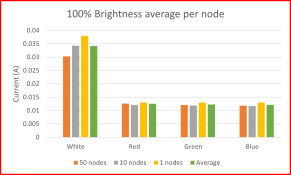BlueSkies27
New elf
- Joined
- Jul 11, 2022
- Messages
- 3
I'm developing a small project that I plan to run off the grid in the evenings for a week. This is NOT a Christmas light display, more of a decoration of a temporary outdoor space that needs to run entirely off-grid without a PC always-on.
I'll be using 12 strings of 50 LED ws2812b 5v pixels (they're a different type from the pixels and strips that many use today, link below) to create a matrix that is 10x50m. I'm planning to use Xlights to sequence it, but I'll leave the computer off for the majority of the week, unless I have issues or need to tweak a sequence. FPP will be running on a Raspberry Pi 3B. I'll have a very small TP-Link usb-powered router (with no internet connection) that all devices will connect to. If I can find one, I might set up a Pi Zero W to fill this function instead. All controllers can be located within 2-3 meters of the router, probably closer, so I don't expect range issues. I'll be using 2x Wemos D1 Mini V4 or Pro V2 (probably the latter, as the JST power supply option will be useful on other projects in the future) as LED controllers. There will also be two more ws2812b strips (5m 30 led/m) with separate controllers. One major limitation: my display needs to run entirely on 5V, and do so as efficiently as possible, as I have somewhere between 50-100AH at 5V to work with per day, and I'd like it to run for 6-8 hours per day. I'm OK being selective in my brightness and color settings (no white, patterns where all LEDs and pixels aren't always on, etc) to accommodate for power limitations. I'm also expecting to need to inject power every 100 pixels in the matrix, which will probably have 600 pixels total. Not planning on injecting power in the 5M strips.
The majority of the LEDs I'm using (the transparent wire option)

 www.aliexpress.com
I'm using these because my matrix needs to be flexible, lightweight, and fairly weatherproof, and the omnidirectional light is nice also. Regular strips are fragile, and the pixel strings everyone has been using to date are a bit heavy for my project. I'm somewhat new to this particular WS2812B pixel string type, so if anyone has experience or knowledge of how they differ from the typical WS2812b pixel strings that everyone loves, I'm interested to hear your thoughts.
www.aliexpress.com
I'm using these because my matrix needs to be flexible, lightweight, and fairly weatherproof, and the omnidirectional light is nice also. Regular strips are fragile, and the pixel strings everyone has been using to date are a bit heavy for my project. I'm somewhat new to this particular WS2812B pixel string type, so if anyone has experience or knowledge of how they differ from the typical WS2812b pixel strings that everyone loves, I'm interested to hear your thoughts.
Does my design seem sound? Will the hardware I've chosen work well together? Is there something I've gotten wrong?
Disclaimer: this is my first project of this scale, and my first time using Xlights. I've played around with WLED a bunch and FastLED with demo code a bit for very small & portable LED projects (ones that run on small USB power supplies), and I've never built an addressable LED Christmas light display (yet!).
I'll be using 12 strings of 50 LED ws2812b 5v pixels (they're a different type from the pixels and strips that many use today, link below) to create a matrix that is 10x50m. I'm planning to use Xlights to sequence it, but I'll leave the computer off for the majority of the week, unless I have issues or need to tweak a sequence. FPP will be running on a Raspberry Pi 3B. I'll have a very small TP-Link usb-powered router (with no internet connection) that all devices will connect to. If I can find one, I might set up a Pi Zero W to fill this function instead. All controllers can be located within 2-3 meters of the router, probably closer, so I don't expect range issues. I'll be using 2x Wemos D1 Mini V4 or Pro V2 (probably the latter, as the JST power supply option will be useful on other projects in the future) as LED controllers. There will also be two more ws2812b strips (5m 30 led/m) with separate controllers. One major limitation: my display needs to run entirely on 5V, and do so as efficiently as possible, as I have somewhere between 50-100AH at 5V to work with per day, and I'd like it to run for 6-8 hours per day. I'm OK being selective in my brightness and color settings (no white, patterns where all LEDs and pixels aren't always on, etc) to accommodate for power limitations. I'm also expecting to need to inject power every 100 pixels in the matrix, which will probably have 600 pixels total. Not planning on injecting power in the 5M strips.
The majority of the LEDs I'm using (the transparent wire option)

WS2812B RGBIC Christmas Lights LED String 5 m 50 leds WS2812 Birthday Party Room Decoration Light Addressable Individually 5V 12 - AliExpress 39
Smarter Shopping, Better Living! Aliexpress.com
Does my design seem sound? Will the hardware I've chosen work well together? Is there something I've gotten wrong?
Disclaimer: this is my first project of this scale, and my first time using Xlights. I've played around with WLED a bunch and FastLED with demo code a bit for very small & portable LED projects (ones that run on small USB power supplies), and I've never built an addressable LED Christmas light display (yet!).
Last edited:


